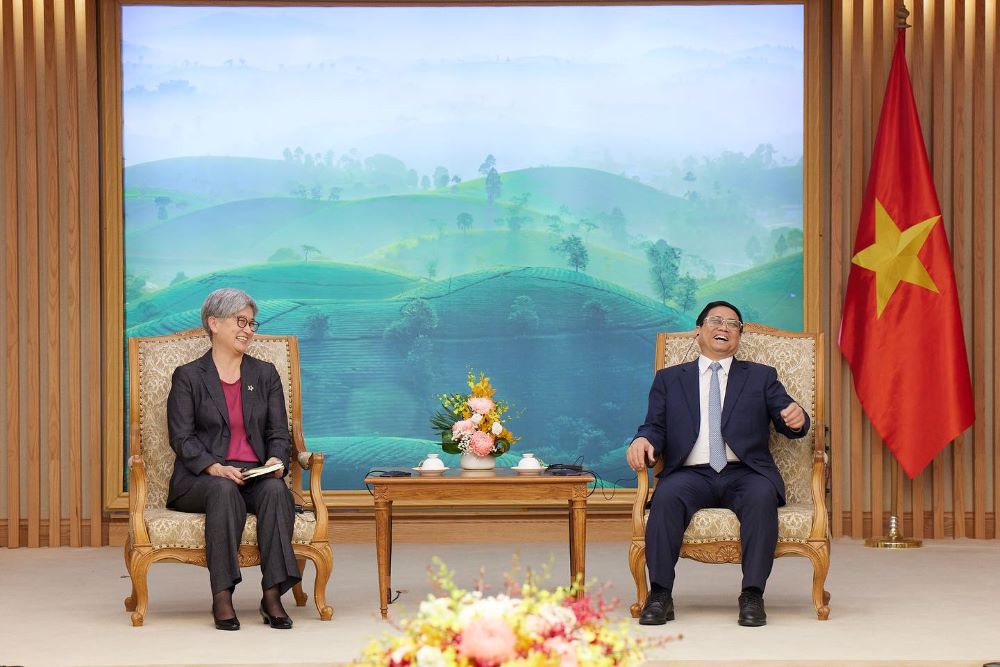
There’s growing awareness that Australia’s international development program is one of the tools of national power that Australia can use to shape the world around it.
The danger is that if ‘influence’ becomes an unstated way of judging the success of Australia’s aid, the focus may become short term and transactional. While development experts may be pleased about increased recognition of the importance of the development program—for example, in building relationships with neighbours—they’re concerned that the performance metric shouldn’t be whether, say, a country’s politicians and elites are positively disposed towards Australia.
The key to resolving this is to be clear about the type of influence that development partnerships can create. Australia’s 50-year investment in Vietnam is an instructive lesson on what a successful development partnership can achieve—and a realistic idea of what it cannot. It demonstrates that development cooperation is a long-term tool of influence.
I was in Hanoi to hear Foreign Minister Penny Wong celebrate the 50th anniversary of the Whitlam government’s recognition of Vietnam. Fifty years ago it would have been fanciful to imagine a foreign minister from a wartime enemy extolling the level of strategic trust and the people-to-people links between the two countries. It would have been even more difficult to imagine the location for the speech: the Ho Chi Minh National Academy of Politics, the literal heart of the Communist Party of Vietnam.
So how have two countries with extremely different political systems built this kind of relationship? It was done through long-term investment across all the tools of statecraft—including diplomacy, trade and defence—with development cooperation as a key element. This enabled a progression from battlefield enemy to major economic and development partner in a surprisingly short period.
Australia is still remembered for many ‘firsts’ in Vietnam. Crucially, Australia was among the first to recognise Vietnam and support its membership of the United Nations. For a time, the Australian diplomatic mission in Hanoi became the only bridge of communication between Vietnam and many Western nations.
Australia built Vietnam’s first undersea cable, satellite ground stations and high-voltage transmission lines. Many of the first foreign banks and law firms in Vietnam were also Australian. RMIT was the first international university to be invited into Vietnam.
Australia constructed the first bridge across the Mekong River in Vietnam in 2000, Australia’s largest development project to that time. Colloquially known as the ‘Australian bridge’, it remains a very visible symbol of the depth of the relationship. Tertiary education has also been an important vector to build people-to-people ties, including through scholarships provided under the development program.
As Vietnam’s needs and objectives have changed, so too has the nature of Australia’s cooperation. Today the centrepiece is the Vietnam Australia Centre embedded within the Ho Chi Minh National Academy. The centre draws on Australian expertise to provide training, capacity building, research activities and policy input to support Vietnam’s national and provincial leadership.
Australia has not shied away from difficult topics. One focus of Australia’s development support is on women’s equality and leadership. Since 2002, Australia and Vietnam have regularly held human rights discussions, with the 18th Human Rights Dialogue taking place in Hanoi earlier this year. Australia has adopted a peer support model in which each country shares its human rights challenges and encouragement is given to meeting international human rights commitments. While this isn’t as cathartic as condemning Vietnam for its human rights abuses, of which there can be no doubt, it does provide an opportunity to influence thinking and approaches over the long term.
All of this shows that Australia has been a genuine partner in helping Vietnam meet its development goals despite significant ideological differences. Australia’s pioneering engagement with Vietnam has built huge reservoirs of goodwill. It has helped Australia develop a significant profile in Vietnam, which is useful for trade and other links, and an outsized level of access to Vietnamese policymakers.
So does this mean that Australia can tell Vietnam what to do? That is neither realistic nor desirable.
Influence is about creating a region that Australia wants to live in, where neighbours are meeting their development goals. This means that the focus of the development partnerships shouldn’t be on short-term, transitory outcomes or benefits.
The measure of success is that Australia has helped shape Vietnam in a way that suits Australia’s broad long-term interests in fostering a peaceful, stable and predictable region.
Perhaps the best argument in favour of a long-term investment in development, diplomacy, trade and defence is the counterfactual one. Imagine Vietnam had developed in the way that North Korea did. That’s actually not hard to conceive. Not only would it be a negative for Vietnamese people, it would be devasting for the region.
For those who are inclined to be fatalistic about Australia’s ability to impact international affairs, the Australia–Vietnam relationship is an object lesson in what can be achieved with a commitment to shaping a shared future and the intelligent, long-term use of Australia’s tools of statecraft, including its aid program.
Don’t judge Australia’s development program by whether a country’s current political leader is pro-Australia. Judge it by the trajectory of 50 years.

